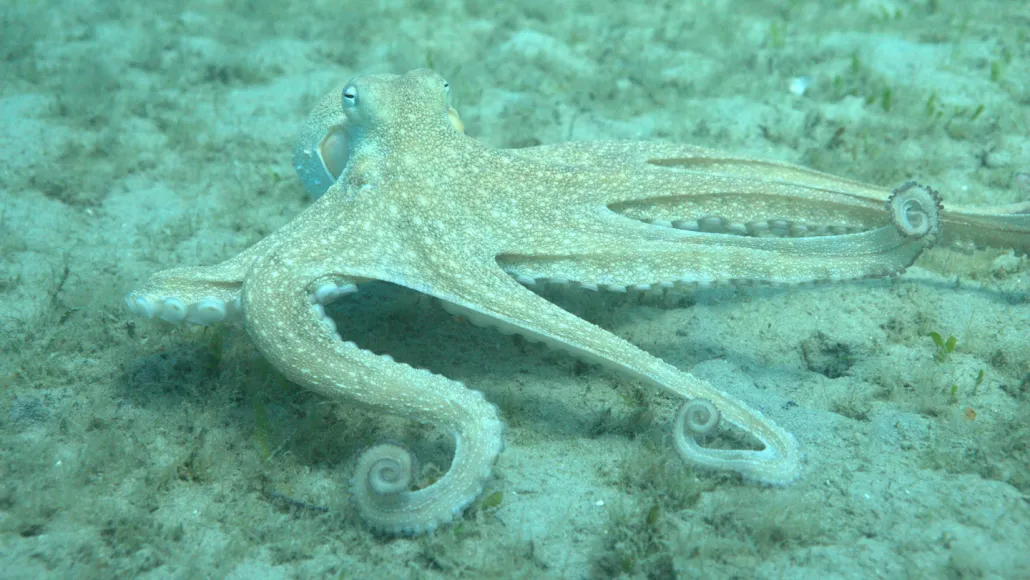The cephalopods don’t use every limb in the same manner, something they share with primates
An octopus can technically use any of its eight arms for any purpose, but new research reveals that some limbs are more likely to take on specific roles.
A detailed analysis published on September 11 in Scientific Reports shows that while every arm shares the same range of motion and skills, the front four tend to focus on exploring and manipulating objects, whereas the back four mainly handle movement. The study offers one of the most thorough accounts yet of how octopuses coordinate their famously flexible limbs in the wild.
Because an octopus’s arms make up most of its body and contain a majority of its neurons, understanding their movements provides key insight into how these animals think and behave. Marine biologist Chelsea Bennice of Florida Atlantic University and her team analyzed 25 underwater videos recorded between 2007 and 2015 in Spain and the Caribbean, documenting nearly 4,000 separate arm movements across multiple octopus species.
They found that octopuses performed 12 types of actions, such as reaching, grasping, and raising their arms, and that these actions could involve four kinds of deformation — elongating, shortening, bending, and twisting.
“Octopuses are the ultimate multitaskers,” Bennice said. “Every arm can perform every type of movement, and they can even do multiple actions at once on a single arm or across several arms.”
Still, there was a clear preference in how the limbs were used. The front four arms were more active overall, responsible for nearly two-thirds of all movements, while the back arms often provided support, helping with crawling, lifting, or rolling the body forward across the seafloor like a conveyor belt.
This mild specialization mirrors patterns seen in mammals such as rodents and primates, though the study found no evidence of left- or right-side dominance. Instead, octopuses tended to move their arms in symmetrical left-right pairs, suggesting a more balanced coordination strategy.
The findings could inform advances in soft robotics — machines modeled after octopus limbs that require both precision and flexibility. Bennice hopes future research will compare other species, such as the long-limbed mimic octopus (Thaumoctopus mimicus), to see whether differences in body shape affect limb behavior.
“Other octopuses have different proportions and movement styles,” Bennice said. “Understanding how that affects their arm use could reveal even more about how these extraordinary animals interact with their world.”
